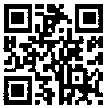| Image via CrunchBase |
| Image via CrunchBase |
In my class, students have already read the Story Tree graded reader at home, listened to it on CD, and worked through the accompanying workbook. The story and vocab then, is familiar several times over. Nevertheless, important to warm up before wading in to action. In our case, we listened to the story again off the CD, and followed along. Time was going to be an issue, so I did not want to do anything else at this stage, just get the story back in our heads. (With time, an extra resource used would have been Quizlet - key vocab exercise or two).
Preparation: which took 10 minutes typing as quickly as possible, inputting the entire text of the story into Wordle. Important: avoid capitalisation except for names, otherwise you'll get replication in your cloud which is unnecessary/confusing. Here is the wordle on the left.
Word clouds explained: An image is generated of the words found in a text. Size of the words repesents the relative frequency that those words occur in the text. This works very nicely with graded readers which recycle vocabulary/phrases a lot.
I strongly recommend using eg Tagxedo instead of Wordle! There is more variety in the templates etc, and you can save your wordclouds as jpegs etc. Wordles once created cannot be searched i.e. fairly useless if you want to go back later & use again. Embedding here has also given me formatting headaches :(
NB Orientate most/all the words horizontally for young learners, and see if you can find a decent font that does not have unfriendly /a/ or /g/ etc. (I couldn't find one on Wordle)
Cover the words in the readers, and just use the pictures (as cues). Explain that you want students to retell the story, using the wordle (printed out) to remind them of the words they can use.
Use audioboo app on iOS device and record (the free app allows you 5 minutes of recording time) (another recording app is fine, but the 'boo means other students can access it on their devices/at home after etc). I think with younger learners doing this as a collaborative task is a good format (or in my class, with mum). Seeing the timer run down is a good management tool to get students to 'finish' (and not dwell where they 'get stuck').
It is important that you brief the students against trying to get the story 'perfectly right' - retell it word for word as in the text. I don't think even teachers could do this! Rather, it generates in students the awareness that words 'are missing' (but that they can still narrate a story). Playing back the recording now will identify those words. With the wordle (not the text) listen to the students versions and circle the words on the wordle that they use (with older learners they could mark the word every time they used it). Obviously, teacher will need to hook up the iOS to a speaker for class to hear if this is a group exercise, and to pause regularly for students to 'replay' the soundtrack in their heads as they do a mental wordsearch.
My students really enjoyed listening to themselves and trying to figure out what they had said, and were quite critical of themselves! They were also keen to find their own 'mistakes', such as using the 'wrong' verb/noun collocation. We found that we had used some other words (not in the world) and made a little list of those. We found we had a big bunch of words that we hadn't used at all - for various reasons eg low frequency, 'new', false-friend used instead etc. In our particular case, the students had not used any of the words used in direct speech, nor the narrative verbs eg 'say', 'shout'.
This gave us an excellent excuse to read the story again! Students were asked to speak the parts of the different characters (necessitating a bit of reading ahead to recognise their parts and therefor the key words we had overlooked initially - cool!) while I narrated. This is a nice way to finish, as it gives students a polished final production - record it as an audioboo too. Ask students to 'add oomph' (not yell) - a muttered "Oh! Help!" doesn't work, does it?!
Final reminder - make sure you iOS battery doesn't run out while you are doing this (mine did, as we were reading the book again together). You will get the idea, anyway, I hope! If you want to take pictures while you are doing this, you will need another device/actual camera (recommended)!
Try this with your class - and please give me feedback!


No comments:
Post a Comment
By all means leave your comments - please do not be offensive, abusive, or rude. We ask you to sign your comment as well, please.